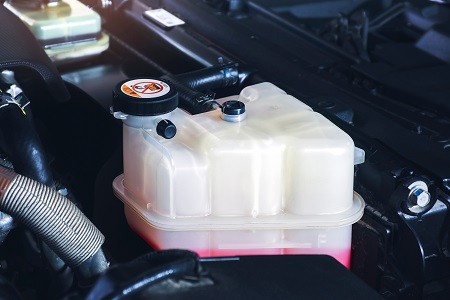Is your car showing signs of distress, like running hotter than usual or exhibiting coolant leaks? These could be indicators of a failing water pump, a critical component often overlooked until problems arise. A malfunctioning water pump can quickly escalate into significant engine damage. Recognizing the symptoms and understanding the function of your car’s water pump is crucial for preventative maintenance and avoiding costly repairs. This article delves into the essential question: what does a water pump do in a car? We will explore its function, the telltale signs of a failing water pump, and guidelines for replacement, empowering you to keep your vehicle running smoothly and efficiently.
The Crucial Function of a Water Pump in Your Car
To truly understand the importance of a water pump, it’s essential to know what a water pump does in a car. In essence, the water pump is the heart of your vehicle’s cooling system. It’s a mechanical pump, typically driven by a belt connected to the engine, although some modern vehicles utilize electric water pumps. Its primary role is to circulate coolant throughout the engine and cooling system.
Think of your car’s engine as a powerhouse generating immense heat through combustion. This heat needs to be effectively managed to prevent overheating and potential engine seizure. This is where the water pump steps in. It propels coolant – a specialized fluid designed to absorb and dissipate heat – from the radiator, through the engine block and cylinder head, and back to the radiator to be cooled again. This continuous circulation is vital for maintaining the engine at an optimal operating temperature, preventing damage from excessive heat. Without a properly functioning water pump, the coolant would remain stagnant, leading to rapid engine overheating and severe mechanical issues.
Key Signs of a Failing Water Pump
Now that you understand what a water pump does in a car, recognizing the signs of its failure becomes crucial. Early detection can prevent significant engine damage and save you from expensive repairs. Here are some key symptoms to watch out for:
Coolant Leaks and Low Coolant Levels
One of the most common indicators of a failing water pump is a coolant leak. As the seals within the water pump wear out over time, they can begin to leak coolant. If you notice a puddle of coolant, often greenish or reddish in color, beneath the front center of your car, it’s highly likely to be originating from the water pump area. Similarly, if you find yourself frequently needing to top up your coolant levels, and there are no other apparent leaks in hoses or the radiator, a failing water pump should be a prime suspect.
Engine Overheating and High-Temperature Readings
As established, a critical aspect of what a water pump does in a car is temperature regulation. When the water pump starts to fail, its ability to circulate coolant effectively diminishes. This leads to a rapid increase in engine temperature. Keep a close eye on your car’s temperature gauge. If it consistently reads higher than normal or climbs into the “hot” zone, especially during normal driving conditions, it’s a strong indication that the water pump may be failing. Ignoring this warning can lead to severe engine damage, including warped cylinder heads and cracked engine blocks.
Whining Noises from the Engine
Unusual noises emanating from your engine can often signal trouble. In the case of a water pump, a high-pitched whining or grinding noise, particularly when the engine is running, could be a sign of bearing failure within the pump. The bearings are crucial for the smooth operation of the water pump pulley. When these bearings wear out, they create friction and noise. This whining sound often becomes more pronounced as the engine speed increases.
Steam or Heat from the Engine
If you notice steam emanating from under the hood, or feel excessive heat radiating from the engine compartment, it’s a clear indication of overheating. While overheating can stem from various issues, a malfunctioning water pump is a frequent culprit. The steam is often a result of coolant boiling due to insufficient circulation caused by a failing pump. In such situations, it’s vital to pull over safely, allow the engine to cool down, and seek professional assistance.
Rust and Corrosion on the Water Pump
Visual inspection of the water pump itself can sometimes reveal problems. Rust and corrosion around the water pump housing or pulley are telltale signs of leaks and internal wear. Coolant leaks, even minor ones, can lead to rust and corrosion over time. Additionally, debris and contaminants in the cooling system can accelerate wear and tear on the water pump components, leading to visible corrosion.
How Often Should a Water Pump Be Replaced?
While understanding what a water pump does in a car and recognizing failure signs are important, knowing preventative maintenance schedules is equally vital. While there’s no strict rule for water pump replacement, a general guideline is to consider replacing it every 60,000 to 90,000 miles. However, this is just an estimate. Several factors can influence the lifespan of a water pump, including driving conditions, vehicle maintenance history, and the quality of the original pump.
If you frequently drive in stop-and-go traffic, in extreme temperatures, or tow heavy loads, your water pump may experience more stress and wear, potentially requiring earlier replacement. Conversely, if you primarily drive on highways in moderate conditions and adhere to regular vehicle maintenance, your water pump might last longer. It’s also often recommended to replace the thermostat concurrently with the water pump, as these components often work together and are accessible at the same time during replacement.
Testing Your Water Pump
If you suspect your water pump is failing based on the symptoms mentioned, there are a few basic checks you can perform. With the engine running (and carefully avoiding moving parts), listen for any unusual noises emanating from the water pump area. You can also visually inspect for coolant leaks around the pump housing and check the coolant reservoir level.
For a more definitive diagnosis, a mechanic can perform a coolant flow test to assess the pump’s efficiency. This test measures the coolant flow rate to determine if the pump is circulating coolant adequately. If you are experiencing persistent overheating or other signs of water pump failure, it’s always best to consult a qualified mechanic for a thorough inspection and diagnosis.
Conclusion
Understanding what a water pump does in a car highlights its indispensable role in maintaining engine health and preventing costly breakdowns. By being vigilant for the signs of a failing water pump – such as coolant leaks, overheating, unusual noises, and visual indicators of rust or corrosion – and adhering to recommended maintenance intervals, you can proactively address potential issues. Regular vehicle maintenance, including cooling system checks, is key to ensuring the longevity and reliable performance of your car’s water pump and overall engine health. Don’t wait for your engine to overheat; be proactive and ensure your water pump is doing its vital job effectively.

